Morgan Stanley - Annual Global Healthcare Conference
Morgan Stanley Annual Global Healthcare Conference Presentation
Share
Services
The internationally renowned Fresenius Helios heart center in Leipzig is celebrating its thirtieth anniversary. Representatives from the political sphere, research community, and hospital have commended the heart center and its history of cutting-edge medicine at the Helios hospital in Leipzig. Further guests beside the Saxon Minister-President included Leipzig’s Lord Mayor Burkhard Jung and the Rector of Leipzig University, Professor Eva Inés Obergfell.
Robert Möller, Fresenius Management Board member and Helios CEO:
“The Fresenius promise of ‘Committed to Life’ also brings a responsibility with it. We not only save lives, but also improve both the quality of people’s lives and their health. We provide access to affordable, innovative medicine of the highest quality. All of this is impressively demonstrated here at the heart center. I am delighted that we are today considered a cornerstone of the medical infrastructure here in Leipzig and the wider region, and cooperate with Leipzig University in the areas of pediatric cardiology, cardiac surgery, and cardiology. This in turn enables us to drive future-oriented projects in both clinical and research fields. It is a success story of a trusting cooperation on an equal footing with Leipzig University and the Free State of Saxony. In its 30-year history, the Leipzig Heart Center has been involved in state-of-the-art diagnostic and therapeutic procedures and a variety of research initiatives that extend far beyond national borders and earned itself a global reputation.”
Michael Kretschmer, Minister-President of the Free State of Saxony:
“Leipzig Heart Center has stood for cutting-edge medicine and medical innovation for 30 years now. Patients of all ages know that they will receive first-class care for their heart problems here. Other hospitals in the region can also rely on the specialist knowledge of the experts in Leipzig. This makes the heart center an important cornerstone of medical care in our region. The Free State of Saxony will continue to support the heart center in the future. It is investing in the renovation and expansion of pediatric cardiology as well as in digitalization so that people can continue to receive the highest level of care.”
Cutting-edge medicine making history
The Leipzig Heart Center has achieved countless milestones over the past 30 years: Doctors and nurses have used state-of-the-art technology to so far perform over 100,000 heart operations, more than 270,000 cardiac catheterizations, and 100,000 ablations, helping to improve the lives of around 500,000 patients. Particularly worthy of mention here are the advances in minimally-invasive heart surgery, interventional cardiology, and electrophysiology, which have made the Leipzig Heart Center a pioneer in its field.
The manifold scientific and clinical achievements mean that Leipzig Heart Center is a leader in many specialist areas – it has the world’s largest heart valve clinic, for example. The cardiology and cardiac surgery departments are among the largest specialist university departments in Germany. The department of pediatric cardiology is the only heart center specifically for children in Saxony, Saxony-Anhalt, and Thuringia. Today, more than 1,450 employees from 50 nations and countless specialized medical fields devote themselves to heart health here.
Helios an authority on cardiac medicine in Germany
As a core component of the Fresenius Care Provision Platform, Helios stands for excellence and high-quality medical outcomes along the entire patient journey. Fresenius Helios operates six heart centers in Germany, namely in Karlsruhe, Krefeld, Leipzig, Siegburg, Schwerin, and Wuppertal. The centers’ staff work together closely within highly specialized, in part cross-regional teams. Making them the practical expression of Fresenius Helios’ medical cluster and specialization strategy.
This release contains forward-looking statements that are subject to various risks and uncertainties. Future results could differ materially from those described in these forward-looking statements due to certain factors, e.g. changes in business, economic and competitive conditions, regulatory reforms, results of clinical trials, foreign exchange rate fluctuations, uncertainties in litigation or investigative proceedings, the availability of financing and unforeseen impacts of international conflicts. Fresenius does not undertake any responsibility to update the forward-looking statements in this release.

CAR-T cell therapy is one of the most innovative gene and cell therapies. In an interview with Fresenius editor Brigitte Baas, Chris Wegener, Director, CGT R&D, Research and Advanced Technologies, Transfusion and Cell Therapies at Fresenius Kabi USA, talks about the early days of device development for CAR-T cell therapy and how he sees the future of cell processing in the next five to ten years.
(Published: November 2024)
Chris, one can say, that you and your team at Fresenius Kabi USA are at the center of product development when it comes to devices for CAR-T cell therapy. How did all the research work on this new therapy method start?
Chris Wegener: The first-in-human clinical trials were conducted by researchers in general in 2011. That was, so to speak, the culmination point of a lot of pre-clinical work that had started already in the 1990s. The first commercial CAR-T approvals took place in 2017.
Please explain for our readers: How exactly did it come about that Fresenius Kabi became involved some time ago in the relatively new field of gene and cell therapy? For a long time, that wasn’t at the heart of our portfolio, was it?
Chris Wegener: We have to go back here a bit. And let me admit: We came to the field of cell and gene therapy quite by accident. Fresenius Kabi happened to have decades of experience in single-use tubing set design and manufacture and automation, whether for blood collection, for blood separation – known as apheresis – or for transfusion medicine. As it became apparent that the field of CGT was something that lacked the right tools, we wondered whether it was possible to use our components to support this growing need. This was because the automated tools we were developing at this time were capable of performing certain parts of the therapeutic workflows in CAR-T cell therapy: They are also equipped with disposable tubing sets and work in a similar way to an apheresis or dialysis machine.
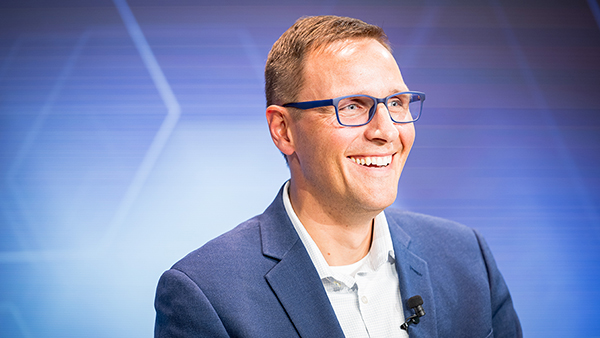
And what happened next?
Chris Wegener: So, we quicky started to put our pumps, tubing, and valve technologies into a frame that would allow flexibility in use. Partially because we, also as new entrants into the world of CGT manufacturing, didn’t know how end users would want to leverage the system. Little did we know that this flexibility would be one of the primary reasons that people would adopt our platforms even today! It was precisely with this expertise that we were able to create the Lovo and Cue cell processing systems. We have simply applied our decades of experience in transfusion medicine and apheresis to cell and gene therapy.
The production of immune cells is very complex, and the production period often lasts a very long time. Why exactly is that so?
Chris Wegener: In most CAR-T processes, the actual production of the cells only takes about seven to nine days. However, since these are personalized medicines, each patient batch needs to undergo a substantial quality control (QC) analysis. These QC tests often take longer than the production itself.
And when the QC is complete, the patient also needs to be prepared for infusion, which may include a short round of chemotherapy. Only then, when both the patient and cells are ready and in the same location, can the cells be reinfused. This is why most CAR-T's have to be frozen at the end of their production process: The function of the cells has to be preserved until everything is ready for infusion.
What exactly are the roles of Lovo and Cue in the complex CAR-T cell production process, when the finished cell cultures for therapy are ultimately harvested out from the bioreactor? In other words, in which part of the production process are Lovo and Cue used?
Chris Wegener: At their core, Lovo and Cue use a special type of filter, better known as spinning membrane filters. They help to efficiently wash and concentrate cells. Washing and concentrating is a necessary step in many parts of a cell therapy production workflow. It may be used to remove blood contaminants from the patient’s starting material, such as platelets or plasma. Or when cells are harvested from a bioreactor, the fluid the cells are suspended in need to be exchanged from a nutrient-rich growth media into something appropriate for cryopreservation.
The Lovo and Cue processing systems have proven to be very effective for all these processes. Both systems do well because they were specifically designed to be simple to operate and gentle on the cells. It helps that Fresenius Kabi was one of the first companies on the market with a CGT-specific system. Prior to this, developers had to rely on “borrowed” technology that was neither fit for use nor easy to operate.
The Lovo system, for example, ensures a fully automatic and fast processing of the laboratory material. We can control every aspect of the process – over the entire production period. What’s more, it is so flexibly configurable that practitioners can use Lovo for a wide range of cell therapy processes. On top this, Lovo quickly accommodates large volumes.
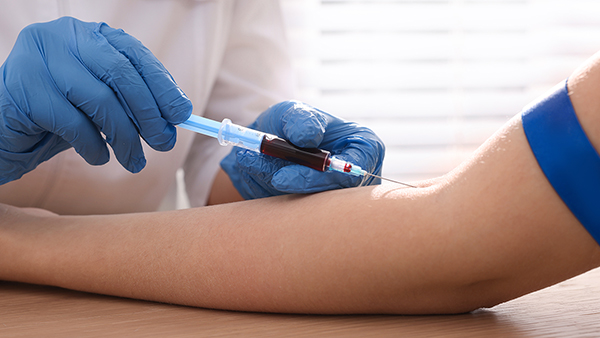
And how can the special features of the Cue processing system best be summed up?
Chris Wegener: The Cue system was, as you might recall, developed later. It was meant to fill in some of the gaps in Lovo’s capabilities. Both systems use the same spinning membrane filtration technology, but Cue uses a proprietary pneumatic syringe pumping system that has much finer control over small fluid volumes. The Cue processing system is particularly suitable for use where volume control is important, like formulation.
As is well known, neither Lovo nor Cue can handle the entire production process alone. Please explain which other processes or systems need to be incorporated before and after.
Chris Wegener: There are three other primary systems that are also required to generate CAR-T cells. The first is called cell selection. Your body has many different types of immune cells, or white blood cells, including B cells, monocytes, macrophages, and T cells. You can’t make CAR-Ts without T-cells. This can be done by binding the T cells to a specially coated bead, often a magnetic one, and applying a magnetic force to physically “pull” the T cells away from the non-target cells.
Second is the act of gene modification. First-generation CAR-Ts use engineered viruses to infect the T cells so they can recognize new targets, like cancers. In this case, viruses are only used to get the genetic material into the cells, but there are some very interesting alternatives in development such as using mechanical “squeezing,” electric fields, or lipid nanoparticles to deliver genic cargoes. Finally, cells will need to be expanded or grown to sufficient cell doses, which may leverage an array of different types of small bioreactors.
Between all of these specialized steps, cells need to be prepared for the next, which is where the flexibility of Lovo and Cue shine and frequently find all kinds of applications. This whole production process is what is known as “modular processing”: Several different processes can be integrated as required.
If you look ahead to the next five or ten years, how do you think the future of cell processing for gene and cell therapy will look?
Chris Wegener: While the effectiveness of this new breed of medicines – the CAR-T cell therapies – has been outstanding, the challenges of production and cost have limited the number of patients treated. Experts estimate only 20 to 25 percent of eligible patients receive treatment. In the next five to ten years, I think the centralized manufacturing approach for many types of cell therapies will be supplemented with another system: One that can be further simplified and deployed at the point-of-care, meaning the bedside of the patient. Patients should expect a more local care journey, where their treatments are prescribed, manufactured, and administered at the healthcare facilities near where they live at an affordable price.
Contact
Fresenius Kabi AG
Else-Kröner-Straße 1
61352 Bad Homburg v.d.H
Germany
T +49 (0) 6172 686 0
communication@fresenius-kabi.com
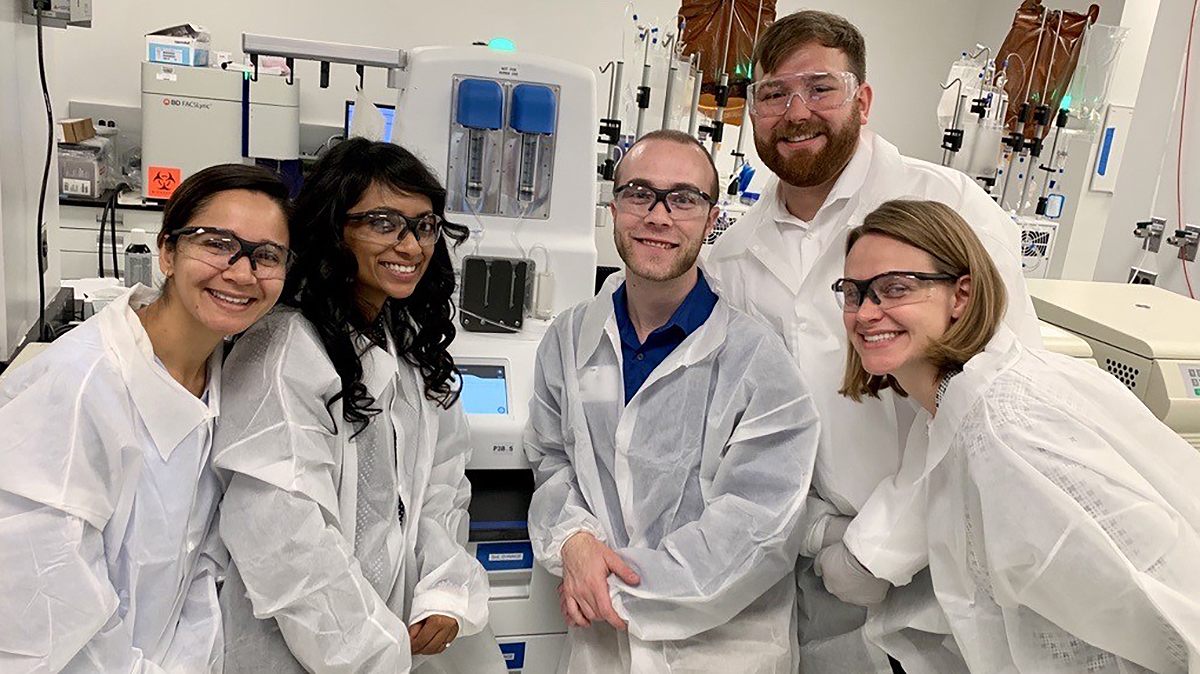
The so-called CAR-T cell therapies are among the most innovative therapy options for malignant blood cancers, for example. They require the patient’s living cells, which are then prepared in a special way using an intricate process. The entire production process for these cell-based therapeutics is extremely complex and logistically challenging, making therapeutic applications expensive and limiting their accessibility:
(Published: November 2024)
Firstly, the patient’s blood cells are removed. The immune cells are then isolated and genetically modified, usually with an engineered virus. They are then expanded – grown to large numbers to be exact – and formulated, thus prepared before being reinfused into the patient. All of this must be carried out in a sterile environment for a batch size of exactly one counter. Because each course of CAR-T cell therapy is individually tailored to each patient – and that is precisely what makes the therapy so special. At present, medical professionals and researchers often need a production period lasting three to six weeks before an individual course of CAR-T therapy is available.
Read more about this in the interview with Chris Wegener, Director, CGT R&D, Research and Advanced Technologies, Transfusion and Cell Therapies Fresenius Kabi USA.
First step toward streamlining: Simple centralization in one production facility
Due to this lengthy and complex production process, the cells are usually produced centrally in one single production facility, not least because highly qualified personnel, the special laboratory equipment, and the necessary infrastructure are all available here. All of this entails major logistical challenges, however, and production bottlenecks can sometimes occur. “And the costs are always high,” explains Chris Wegener. “The resulting therapies thus end up being very expensive overall and practitioners are currently unable to meet the needs of the entire patient population,” he adds.
In order to democratize the treatment and make it accessible to more patients, experts in the cell and gene therapy industry have been working hard for a long time to find new approaches. Their aim is to simplify the process and thus reduce the production costs of CAR-T cell therapy. To be able to do this, however, there needs to be a fundamental change to the way in which CAR-T cells are produced. One of the options for streamlining the process involves further automating the central production. For any such automation to be more efficient, new tools also need to be developed and made available. And it is precisely at this point in the development history that the engineering teams at Fresenius got down to work.
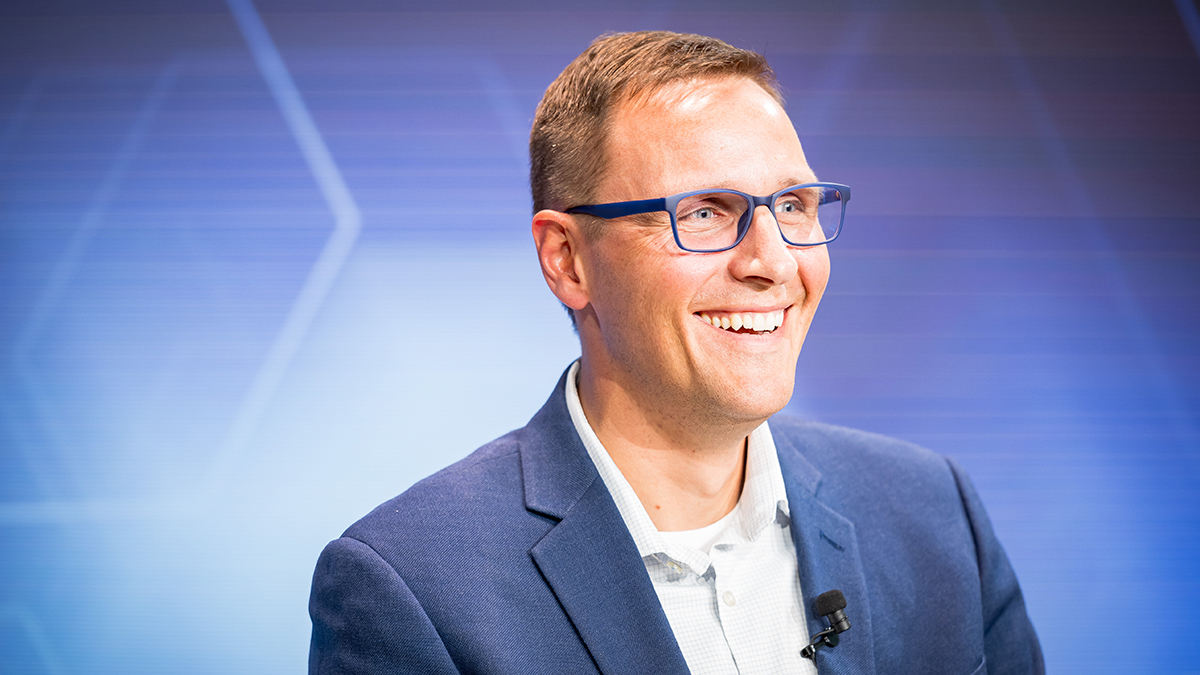
Fresenius Kabi's research team has been working on the Lovo and Cue cell processing systems for quite some time
For a long time, Fresenius Kabi has been supporting the use of CAR-T cell therapies: The company may not be directly involved in medical research into CAR-T cell therapies, but it does have a hand in manufacturing the technical laboratory equipment needed for it.
In the USA, for example, Fresenius Kabi is developing and producing two new devices that are essential to the CAR-T cell therapy process. A strong development team in Lake Zurich has been working on developing the automated Lovo Cell Processing System since 2016, under the aegis of Wegener. And since 2022, work has been continuing on the development of the Cue Cell Processing System. These devices are used in the complex manufacturing process for CAR-T cell therapy as a form of “production equipment.”
“We used to use a centralized R&D team for both the Lovo and the Cue development projects, meaning the colleagues switch to working on the projects as and when their expertise is required – sometimes supporting more than one project at a time,” explains Wegener. “At its peak, both the Lovo and Cue project team operated with around 35 colleagues.”
How it all began
The research community worldwide had started developing CAR-T processes back in 2011, nearly 15 years ago. “The initial processes employed to produce the specific cell cultures in a bioreactor were similar to the work performed in a medical research laboratory: Scientists moved around in special clean rooms, wearing the familiar “bunny suits” and using pipettes to transfer liquids between test tubes and flasks,” recalls Wegener, who originally studied biomedical engineering. “But after a while, when it transpired that the CAR-T cells worked astonishingly well for cell therapy, the researchers simply maintained this laborious, time-consuming approach.”
In order to be able to treat more patients, however, the production process would have to move into larger clean rooms and be performed on a larger scale. This expansion is known in technical jargon as a scale-out. “But after some time, you run out of qualified researchers, meaning that you then have a resource problem – and it becomes too expensive to build more clean rooms,” says Wegener. “Ultimately, at some point in the development, it is simply no longer possible to treat all patients who need therapy.” The developers of therapeutics had realized that they need to change fundamentally the way in which they produce CAR-T cells.
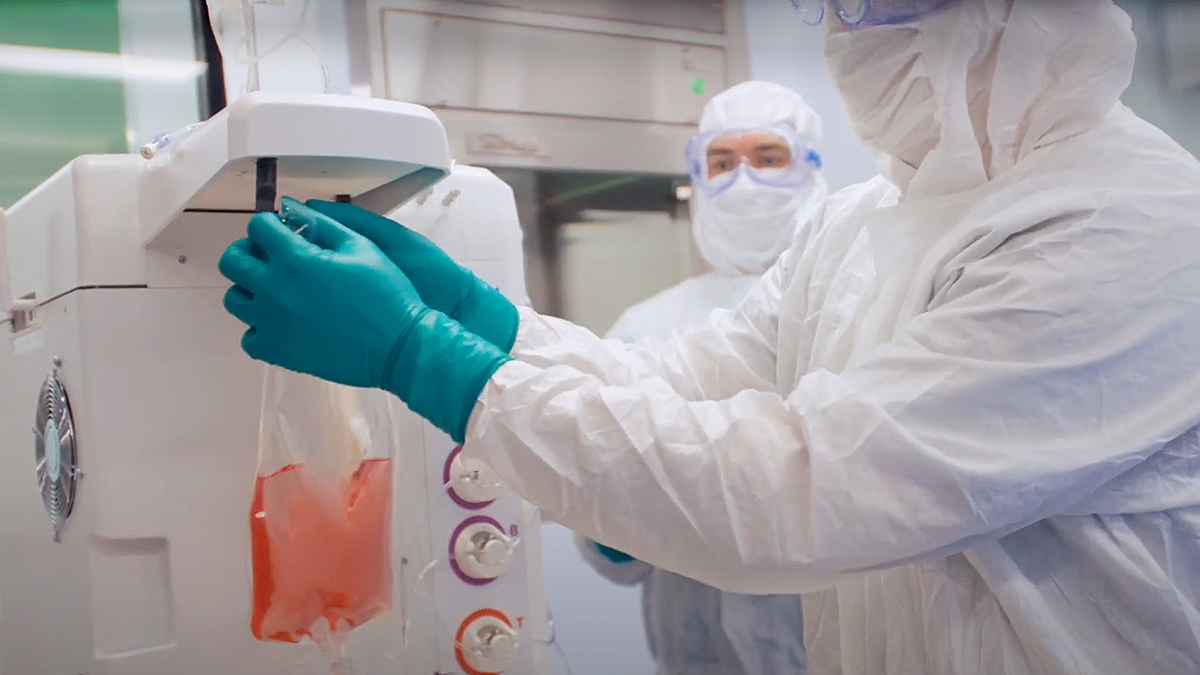
What is needed: Highly complex and automated devices
For the necessary expansion of the manufacturing process, two things in particular are important, according to Wegener: “Above all, highly complex and automated devices are needed that have been specially developed for the production processes associated with CAR T-cell therapy. And these systems must be self-contained – in other words, sterile,” Wegener continues. It turned out that the Lovo and Cue systems Kabi has been developing for more than eight years, meet precisely these requirements: They are automated to such an extent that even personnel who are less qualified can simultaneously carry out several processes. They are also flexible and can be configured to support many different workflows. And what’s more, the devices can be operated outside the clean room.
“We have thus taken a big step closer to bringing about the urgently needed expansion of the manufacturing process,” says Wegener on a positive note. “However, our Lovo and Cue systems cannot manage the entire process alone. Other instruments and processes must be put in place upstream and downstream of our systems,” explains Wegener.
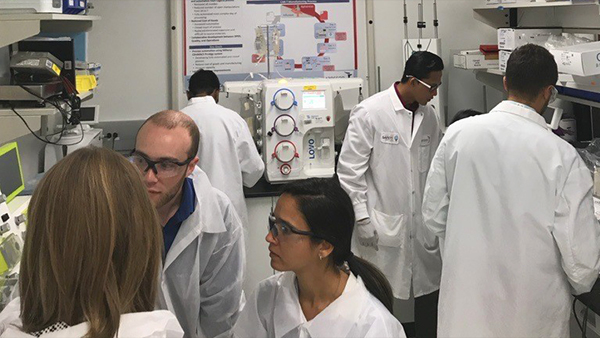
Second development step: largely automated but in a central production facility
Even though the individual work stages are fully automated, the production of cell cultures is still generally carried out centrally, in one single processing facility. Despite all their complexity, such facilities can still produce high-quality therapeutic cells very reliably. However, such a central facility is usually not located anywhere near the patient.
The latest findings in the context of gene and cell therapy have shown that the widespread practice of running highly automated production processes in one central facility – far away from the patients – does not always make sense. Therefore, the research community and therapy developers are working hard to find new ways of simplifying the production process further. Effective and innovative solutions could point in a completely new direction and include decentralizing all of the processes involved in the production of cell cultures. This would bring production closer to the so-called “point of care” – in other words, to the bedside or rather the patient.
“And this is precisely where our focus of research into solutions and devices for the next generation of technology will lie,” says Dr. Marc-Alexander Mahl, President of Pharma, Nutrition and Sustainability at Fresenius Kabi. What’s more, the research is being conducted with the aim to significantly shorten the production process to less than a day or even just a few hours.
However, we expect special applications or conditions where the therapeutic production process at the point of care is not optimal. “It will therefore be important to develop in parallel lab process features for our Lovo and Cue cell processing systems and to further expand the existing product range,” adds Dr. Mahl.
Learn more about the opportunities and risks of this innovative treatment option in our interview with Prof. Bertram Glass, Chief Physician for Hematology and Stem Cell Therapy at Helios Hospital Berlin-Buch: CAR-T cell therapy: Innovative therapy with the aid of genetically modified cells
Contact
Fresenius Kabi AG
Else-Kröner-Straße 1
61352 Bad Homburg v.d.H
Germany
T +49 (0) 6172 686 0
communication@fresenius-kabi.com
The rate of change, a key parameter for determining the price increase for the reimbursement of hospital treatments in 2025 in Germany, has been set at 4.41%. The change in hospital costs is the other parameter used in the annual determination of the reimbursement increase. The final DRG inflator should be determined at the latest by the end of the year.
The rate of change, a key parameter for determining the price increase for the reimbursement of hospital treatments in 2025 in Germany, has been set at 4.41%. The change in hospital costs is the other parameter used in the annual determination of the reimbursement increase. The final DRG inflator should be determined at the latest by the end of the year.
Morgan Stanley Annual Global Healthcare Conference Presentation
Fresenius continues streamlining the production network of its Operating Company Fresenius Kabi in line with its Vision 2026 and #FutureFresenius: Today, Fresenius Kabi transferred the ownership of its subsidiary Laboratorio Sanderson S.A., Chile, to Medifarma, a multinational pharmaceutical company from Peru with a strong presence in Latin America. This divestment includes the IV Laboratorio Sanderson plant in Santiago de Chile. Medifarma will continue the manufacturing of the existing portfolio of products in Chile. Fresenius Kabi remains committed to the Chilean as well as South American markets and will continue its presence accordingly. This is another step to reduce complexity and optimize utilization in Fresenius Kabi’s global manufacturing network.
Fresenius continues streamlining the production network of its Operating Company Fresenius Kabi in line with its Vision 2026 and #FutureFresenius: Today, Fresenius Kabi transferred the ownership of its subsidiary Laboratorio Sanderson S.A., Chile, to Medifarma, a multinational pharmaceutical company from Peru with a strong presence in Latin America. This divestment includes the IV Laboratorio Sanderson plant in Santiago de Chile. Medifarma will continue the manufacturing of the existing portfolio of products in Chile. Fresenius Kabi remains committed to the Chilean as well as South American markets and will continue its presence accordingly. This is another step to reduce complexity and optimize utilization in Fresenius Kabi’s global manufacturing network.